
Ulu Temburong National Park: Brunei's Pristine Wilderness
Discover Ulu Temburong National Park, Brunei's pristine rainforest, perfect for nature lovers and adventure seekers. Explore treetop walkways, kayak rivers, and meet local tribes.
Ulu Temburong National Park is a haven for nature lovers and adventure seekers. Located in the Temburong District of Brunei, this park is often referred to as the 'Green Jewel of Brunei' due to its lush, unspoiled rainforest. The park covers an area of 550 square kilometers and is home to a rich diversity of flora and fauna. Visitors can explore the dense jungle, pristine rivers, and breathtaking waterfalls. A highlight of any visit to Ulu Temburong is the Canopy Walkway, which offers stunning views of the rainforest from a height of 50 meters. The walkway is a series of suspension bridges and towers that allow you to walk among the treetops. It's a perfect spot for birdwatching and photography, with many rare and colorful species to be seen. For those who enjoy a bit of adventure, the park offers exciting activities such as kayaking, river tubing, and jungle trekking. Guided tours are available, providing insights into the unique ecosystems and local culture. Don't miss the chance to visit a traditional longhouse and learn about the lifestyle of the Iban people. Ulu Temburong National Park is not just a destination, it's an unforgettable experience in one of the world's most pristine natural environments.
Local tips in Ulu Temburong National Park
- Book a guided tour in advance to make the most of your visit and learn about the local flora and fauna.
- Wear comfortable, light clothing and sturdy walking shoes suitable for trekking through the jungle.
- Bring insect repellent and sunscreen, as the tropical climate can be harsh on your skin.
- Visit early in the morning for the best chance to see wildlife and to avoid the midday heat.
- Carry a waterproof bag for your electronics and valuables, especially if you plan to go kayaking or river tubing.
Ulu Temburong National Park: Brunei's Pristine Wilderness
Ulu Temburong National Park is a haven for nature lovers and adventure seekers. Located in the Temburong District of Brunei, this park is often referred to as the 'Green Jewel of Brunei' due to its lush, unspoiled rainforest. The park covers an area of 550 square kilometers and is home to a rich diversity of flora and fauna. Visitors can explore the dense jungle, pristine rivers, and breathtaking waterfalls. A highlight of any visit to Ulu Temburong is the Canopy Walkway, which offers stunning views of the rainforest from a height of 50 meters. The walkway is a series of suspension bridges and towers that allow you to walk among the treetops. It's a perfect spot for birdwatching and photography, with many rare and colorful species to be seen. For those who enjoy a bit of adventure, the park offers exciting activities such as kayaking, river tubing, and jungle trekking. Guided tours are available, providing insights into the unique ecosystems and local culture. Don't miss the chance to visit a traditional longhouse and learn about the lifestyle of the Iban people. Ulu Temburong National Park is not just a destination, it's an unforgettable experience in one of the world's most pristine natural environments.
When is the best time to go to Ulu Temburong National Park?
Iconic landmarks you can’t miss
Sumbiling Eco village
Experience Brunei's natural beauty at Sumbiling Eco Village, where adventure meets sustainability in a tranquil rainforest setting.

Bandarku Permata Hijau
Explore the serene beauty of Bandarku Permata Hijau in Labu Estate, a hidden tourist gem perfect for nature lovers and outdoor enthusiasts.

Taman Batang Duri Taman Mini Zoo Temburong
Discover the charm of Taman Batang Duri Taman Mini Zoo Temburong, a family-friendly destination showcasing Brunei's diverse wildlife in a serene environment.

Ulu Temburong Canopy Walk
Discover the Ulu Temburong Canopy Walk, a breathtaking aerial adventure through Borneo's lush rainforest, perfect for nature lovers and thrill-seekers alike.

Unmissable attractions to see
Bandarku Permata Hijau
Discover the tranquility of Bandarku Permata Hijau in Labu Estate, a lush tourist attraction offering serene nature walks and picturesque picnic spots.

Taman Warisan Tasek Merimbun
Explore Taman Warisan Tasek Merimbun, a beautiful park in Bukit, Brunei, perfect for nature walks, bird watching, and relaxing family outings amidst lush greenery.

GM Mutiara HQ
Explore the beauty and cultural richness of GM Mutiara HQ in Selangan, a must-visit tourist attraction in Brunei's serene landscape.

Wasai panji
Explore Wasai Panji: A breathtaking hiking area in Bukok, perfect for nature lovers and adventure seekers seeking tranquility and stunning views.

Labulicious Farm
Explore Labulicious Farm: Brunei's charming tourist attraction blending agriculture, nature, and family-friendly fun.

Mural Wall Pekan Bangar
Discover the vibrant Mural Wall in Pekan Bangar, a stunning display of local artistry and cultural storytelling that captivates every visitor.

AZ CAMP MEET POINT
Explore AZ Camp Meet Point in Batang Duri, an enchanting tourist attraction that combines nature, adventure, and local culture for an unforgettable experience.

Labu Estate Rubber Industrial Site
Explore the Labu Estate Rubber Industrial Site in Brunei, where nature meets industry in a captivating cultural experience.

Essential places to dine
Seaworld Neptune Restaurant
Discover a seafood paradise at Seaworld Neptune Restaurant in Jerudong – where fresh flavors meet breathtaking views.
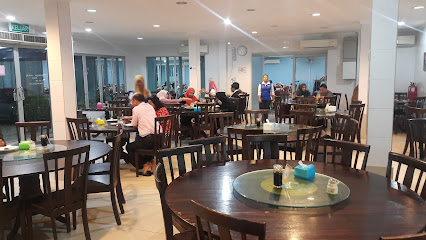
Little Audrey's Café
Discover the cozy charm of Little Audrey's Café in Bandar Seri Begawan, where delicious meals and warm hospitality await every visitor.

Tandoor.com Restaurant
Discover authentic South Asian flavors at Tandoor.com Restaurant in Bandar Seri Begawan – where every dish tells a story.

Ulu Temburong National Park
Explore Ulu Temburong National Park: A pristine rainforest paradise brimming with biodiversity and adventure in Brunei.
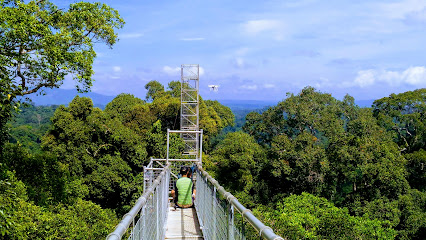
Alter Ego Fusion Cafe
Experience the best of Bruneian and fusion cuisine at Alter Ego Fusion Cafe in Bandar Seri Begawan.

Gwad Basha Arabic Restaurants
Experience the rich flavors of authentic Arabic cuisine at Gwad Basha in Bandar Seri Begawan – where every dish is a journey through tradition.

New Tea Kopitiam
Experience Brunei's culinary heritage at New Tea Kopitiam - where tradition meets taste in every bite.

StoneVille Hotel
Discover tranquility at StoneVille Hotel in Bangar - your gateway to exploring Brunei's natural beauty and cultural treasures.

The Garden's Veranda Banquet Hall & Restaurant
Experience exquisite dining at The Garden's Veranda Banquet Hall & Restaurant in Bandar Seri Begawan, where local flavors meet elegant ambiance.

Tasek Brasserie
Experience exquisite dining at Tasek Brasserie in Bandar Seri Begawan - where local flavors meet international cuisine.

Ya-Nur Restaurant
Discover authentic Bruneian flavors at Ya-Nur Restaurant in Batu Apoi - a must-visit culinary gem showcasing local cuisine.

Elpresso Coffee @ A9 Cafe
Discover the ultimate coffee experience at Elpresso Coffee @ A9 Cafe in Bangar—where every sip tells a story of flavor and passion.

Kebab Temburong (Tanjong Maya Branch)
Discover Kebab Temburong in Tanjong Maya - where authentic flavors meet local hospitality for an unforgettable dining experience.

Cendol Temburong Hj Saban bin Hj Yahya
Discover Brunei's best-kept secret at Cendol Temburong Hj Saban bin Hj Yahya—an authentic dessert shop serving delightful traditional cendol.
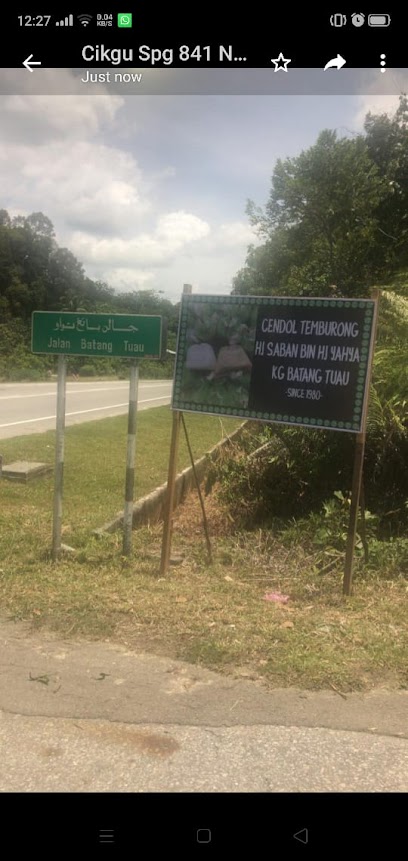
Bonda Restaurant
Experience authentic Asian cuisine at Bonda Restaurant in Bangar – where every dish tells a story and flavors come alive.

Markets, malls and hidden boutiques
Ulu Temburong National Park
Explore Ulu Temburong National Park, a pristine national park in Brunei, known for its lush rainforests, diverse wildlife, and breathtaking landscapes.

Ulu Temburong Canopy Walk
Experience the breathtaking Ulu Temburong Canopy Walk, an elevated journey through Brunei's lush rainforest, perfect for nature lovers and adventure seekers.
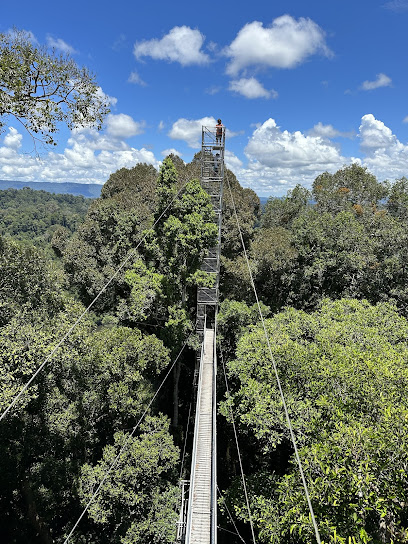
BWN Souvenirs Store
Explore BWN Souvenirs Store for authentic Bruneian gifts and unique treasures to take home, capturing the essence of your travel experience.
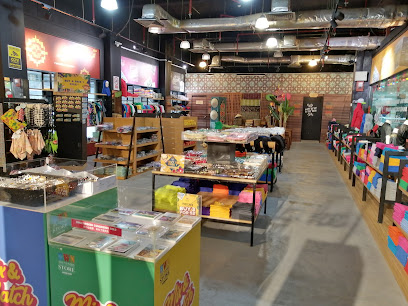
Euro Classic Collection
Explore the charm of Brunei at Euro Classic Collection, your ultimate destination for unique gifts and home decor.

Brunei Souvenirs & Gifts
Explore unique local handicrafts and souvenirs at Brunei Souvenirs & Gifts in Bandar Seri Begawan, a must-visit for travelers seeking authentic Bruneian treasures.

Temburong Pallet Maker
Explore the artistry of traditional wooden craftsmanship at Temburong Pallet Maker in Selangan, Brunei – a treasure trove for unique home goods.

Bajoo' Butik
Explore the vibrant fashion of Brunei at Bajoo' Butik, a boutique offering unique clothing and accessories in Bandar Seri Begawan.

Sunju Enterprise
Explore exceptional luggage and travel accessories at Sunju Enterprise in Bandar Seri Begawan, the perfect stop for every traveler.

Kedai Syarikat kerjasama Mukim Amo
Discover the true taste of Brunei at Kedai Syarikat Kerjasama Mukim Amo, your local supermarket in Kampong Amo.

A & A Arty Balloons
Explore A & A Arty Balloons in Brunei for a whimsical selection of vibrant balloons perfect for any celebration or event.

Samsung experience store
Explore the latest innovations at the Samsung Experience Store in Belaban, where technology meets interactivity and customer engagement.

Lubuk Kaki Bundle
Explore Lubuk Kaki Bundle in Selangan for a diverse selection of trendy clothing that showcases local fashion and creativity.

Angelina Apo Enterprises
Discover the perfect blend of traditional and modern fashion at Angelina Apo Enterprises in Temburong.

Syarikat Datuk Temenggong Ngang Dan Anak
Discover the vibrant local fashion and unique accessories at Syarikat Datuk Temenggong Ngang Dan Anak in Limbang, Sarawak.

Ladystylishshopp
Explore unique fashion finds and local styles at Ladystylishshopp in Limbang, Sarawak, a must-visit for every style-savvy traveler.

Essential bars & hidden hideouts
Royal Brunei Business Class Lounge
Discover the Royal Brunei Business Class Lounge: A luxurious escape for travelers seeking comfort and sophistication in Bandar Seri Begawan.

Ya-Nur Restaurant
Discover the flavors of Brunei at Ya-Nur Restaurant, where culinary excellence meets a welcoming atmosphere for every traveler.
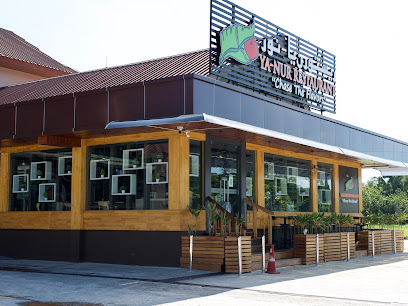
Meetpoint Cafe&Bistro
Experience the vibrant nightlife at Meetpoint Cafe & Bistro in Limbang, where delicious drinks and a welcoming atmosphere await you.

Sky Lounge
Discover tranquility with panoramic views at Sky Lounge in Bandar Seri Begawan, the perfect spot for relaxation before your journey.

Didi Corner
Experience authentic Bruneian flavors at Didi Corner, a delightful restaurant offering a blend of local dishes and warm hospitality.
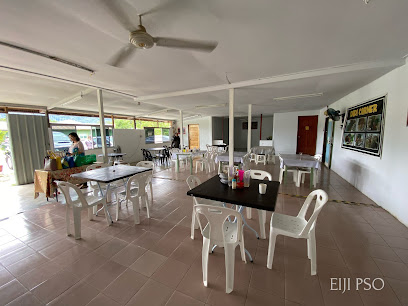
Rafzan Salaian Lumapas
Experience the vibrant local scene at Rafzan Salaian Lumapas, a must-visit bar in Kampung Kilugus offering a welcoming ambiance and delicious drinks.

HNZ cafe
Experience the vibrant flavors of Rataie at HNZ Cafe, where culinary excellence meets a cozy atmosphere.

Bonda Restaurant
Discover the authentic tastes of Asia at Bonda Restaurant in Bangar, where every dish tells a story of rich culinary heritage.

The Hoof Inn
Experience the vibrant atmosphere of The Hoof Inn in Kuala Belait, a charming bar perfect for socializing and exploring local culture.

Birin Cafe
Experience authentic local cuisine at Birin Cafe, a culinary gem in Bangar that showcases the flavors of the region.

Pondok Nasi Yazie & Snow Wash
Savor the flavors of tradition at Pondok Nasi Yazie & Snow Wash, where delicious local dishes meet refreshing desserts in a welcoming atmosphere.

Dropshot Enterprise
Discover the ultimate sports bar experience at Dropshot Enterprise in Bandar Seri Begawan, where thrilling games meet great food and vibrant company.

EZEQUIL SHOLOLORTAN
Experience vibrant nightlife at Ezequil Shololortan, a lively bar in Limbang, Sarawak, where local culture and friendly faces await.

Nolavilla
Experience vibrant nightlife at Nolavilla, a premier bar in Bandar Seri Begawan, offering signature cocktails and a lively atmosphere.

Satay Ramli Temburong
Experience the authentic flavors of Brunei at Satay Ramli Temburong, where delectable skewers and local dishes await every food lover.

Local Phrases about Ulu Temburong National Park
-
- HelloSelamat pagi
[suh-lah-maht pah-gee] - GoodbyeSelamat tinggal
[suh-lah-maht ting-gahl] - YesYa
[yah] - NoTidak
[tee-dahk] - Please/You're welcomeSilakan
[see-lah-kahn] - Thank youTerima kasih
[tuh-ree-mah kah-see] - Excuse me/SorryMaaf
[mah-ahf] - How are you?Apa khabar?
[ah-pah kah-bahr] - Fine. And you?Baik. Dan kamu?
[bah-eek. dahn kah-moo] - Do you speak English?Boleh cakap Bahasa Inggeris?
[boh-leh chah-kahp bah-hah-sah eeng-gah-rees] - I don't understandSaya tidak faham
[sah-yah tee-dahk fah-hahm]
- HelloSelamat pagi
-
- I'd like to see the menu, pleaseBoleh saya lihat menu, silakan
[boh-leh sah-yah lee-haht meh-noo, see-lah-kahn] - I don't eat meatSaya tidak makan daging
[sah-yah tee-dahk mah-kahn dah-yeeng] - Cheers!Sihat!
[see-haht] - I would like to pay, pleaseSaya ingin membayar, silakan
[sah-yah een-geen mehm-bah-yahr, see-lah-kahn]
- I'd like to see the menu, pleaseBoleh saya lihat menu, silakan
-
- Help!Tolong!
[toh-lohng] - Go away!Pergi jauh!
[pehr-gee jah-oo] - Call the Police!Panggil polis!
[pahng-geel poh-lees] - Call a doctor!Panggil doktor!
[pahng-geel dohk-tohr] - I'm lostSaya sesat
[sah-yah suh-saht] - I'm illSaya sakit
[sah-yah sah-keet]
- Help!Tolong!
-
- I'd like to buy...Saya ingin membeli...
[sah-yah een-geen mehm-beh-lee] - I'm just lookingSaya hanya melihat
[sah-yah hahn-yah meh-lee-haht] - How much is it?Berapa harganya?
[beh-rah-pah hahr-gahn-yah] - That's too expensiveItu terlalu mahal
[ee-too tuhr-lah-loo mah-hahl] - Can you lower the price?Boleh kurangkan harga?
[boh-leh koor-ahn-gahn hahr-gah]
- I'd like to buy...Saya ingin membeli...
-
- What time is it?Jam berapa sekarang?
[jahm beh-rah-pah suh-kah-rahn] - It's one o'clockPukul satu
[poo-kool sah-too] - Half past (10)Setengah (sepuluh)
[suh-tuh-ngah (suh-poo-loo)] - MorningPagi
[pah-gee] - AfternoonPetang
[puh-tahng] - EveningMalam
[mah-lahm] - YesterdaySemalam
[suh-mah-lahm] - TodayHari ini
[hah-ree ee-nee] - TomorrowEsok
[eh-sohk] - 1Satu
[sah-too] - 2Dua
[doo-ah] - 3Tiga
[tee-gah] - 4Empat
[em-paht] - 5Lima
[lee-mah] - 6Enam
[eh-nahm] - 7Tujuh
[too-joo] - 8Lapan
[lah-pahn] - 9Sembilan
[suhm-bee-lahn] - 10Sepuluh
[suh-poo-loo]
- What time is it?Jam berapa sekarang?
-
- Where's a/the...?Di mana...
[dee mah-nah] - What's the address?Apa alamatnya?
[ah-pah ah-lah-maht-nyah] - Can you show me (on the map)?Boleh tunjukkan pada saya (di peta)?
[boh-leh toon-jook-kahn pah-dah sah-yah (dee peh-tah)] - When's the next (bus)?Bila bas seterusnya?
[bee-lah bahs suh-teh-roos-nyah] - A ticket (to ....)Sebuah tiket (ke ....)
[suh-boo-ah tee-keht (keh)]
- Where's a/the...?Di mana...
History of Ulu Temburong National Park
-
Long before the official establishment of Ulu Temburong National Park, the region was inhabited by indigenous tribes such as the Iban and Murut. These early settlers relied on the dense forests for their livelihood, practicing traditional farming methods, hunting, and gathering. Their deep connection with the land is still evident in the cultural practices and rituals that have been passed down through generations.
-
During the 19th century, the Temburong region caught the attention of British explorers and naturalists. The dense rainforests and unique biodiversity piqued the interest of scientists who documented the flora and fauna of the area. This period saw the beginning of formal documentation and exploration that would eventually lead to the conservation efforts seen today.
-
Ulu Temburong National Park was officially established in 1991. Recognizing the ecological significance of the region, the Bruneian government set aside this area for preservation and research. The park covers approximately 550 square kilometers of pristine rainforest, serving as a sanctuary for numerous species of plants and animals, some of which are endemic to the area.
-
One of the most iconic features of Ulu Temburong National Park is the Canopy Walkway, which was constructed in the early 2000s. This engineering marvel allows visitors to walk among the treetops, providing a unique perspective of the rainforest's upper layers. The walkway has become a significant attraction, offering unparalleled views and opportunities for birdwatching and wildlife observation.
-
Over the years, Ulu Temburong National Park has become a focal point for conservation and scientific research. Various international and local organizations collaborate to study the park's ecosystems, focusing on biodiversity conservation, climate change, and sustainable tourism. These efforts aim to ensure the park's preservation for future generations while promoting environmental awareness.
-
The park not only serves as a natural haven but also holds cultural significance for the local communities. Traditional rituals and festivals often incorporate elements of the natural environment, showcasing the deep-rooted relationship between the people and the forest. Visitors can experience this cultural heritage through guided tours that highlight the indigenous knowledge and practices.
Ulu Temburong National Park Essentials
-
Ulu Temburong National Park is located in the Temburong District of Brunei. The easiest way to reach the park is by taking a boat from Bandar Seri Begawan to Bangar, the capital of Temburong. From Bangar, you can arrange for land transport to reach the park. The boat journey takes around 45 minutes, followed by a 30-minute drive.
-
Within Ulu Temburong National Park, transportation options are limited to guided tours and local transport services. Most visitors rely on longboats and 4WD vehicles to navigate the park. Guided tours often include transportation, making it easier to explore the park's attractions. For getting around Temburong, taxis and private car hires are available.
-
The official currency in Brunei is the Brunei Dollar (BND). Credit cards are accepted in major hotels and some restaurants, but it is advisable to carry cash, especially for smaller establishments and local markets. ATMs are available in Bangar, but it's wise to withdraw enough cash before heading into the national park.
-
Ulu Temburong National Park is generally safe for tourists. However, standard precautions should be taken, such as keeping personal belongings secure and not venturing into dense forest areas alone. There are no known high-crime areas targeting tourists, but it's always best to stay vigilant and aware of your surroundings.
-
In case of an emergency, dial 993 for police assistance and 991 for medical emergencies. It's recommended to have travel insurance that covers medical emergencies. The nearest medical facility is in Bangar, and it's advisable to carry a basic first-aid kit during your visit to the park.
-
Fashion: Do wear lightweight, breathable clothing suitable for jungle trekking. Avoid wearing flashy jewelry. Religion: Do respect local customs and dress modestly, especially when visiting religious sites. Public Transport: Do be courteous and maintain cleanliness. Don't play loud music or speak loudly. Greetings: Do greet people with a smile and a nod. A handshake is also acceptable. Eating & Drinking: Do try local dishes and be polite when offered food. Don't waste food as it is considered disrespectful.
-
To experience Ulu Temburong like a local, consider staying in a traditional longhouse where you can learn about the Iban culture. Engage with local guides who can share stories and insights about the park's flora and fauna. Don't miss the canopy walk, which offers stunning views of the rainforest. For a unique experience, participate in a night safari to witness the park's nocturnal wildlife.
Nearby Cities to Ulu Temburong National Park
-
Things To Do in Bandar Seri Begawan
-
Things To Do in Muara
-
Things To Do in Tutong
-
Things To Do in Jerudong
-
Things To Do in Seria
-
Things To Do in Kuala Belait
-
Things To Do in Miri
-
Things To Do in Kota Kinabalu
-
Things To Do in Sandakan
-
Things To Do in Kuching
-
Things To Do in Palawan
-
Things To Do in Balikpapan
-
Things To Do in Puerto Princesa
-
Things To Do in Zamboanga City
-
Things To Do in Mui Ne







